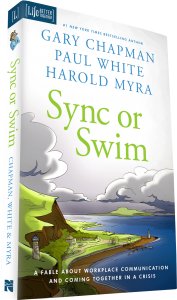How Aesop Got It Right: 6 Reasons Stories Can Motivate Your Team
John was struggling with how to handle a difficult situation with a key vendor for the company. He went to his supervisor, Stephanie, and asked her advice on what he should do. Rather than telling him what to do, or even giving direct input, Stephanie replied, “John, let me tell you a story . . . ” She went on to tell a story about an experience she had had early in her career and the consequences of her decision over the years.
When she was done, she paused and waited. After a few seconds of silence, John smiled and said: “Got it. Thanks.” He stood up and left the room, even though Stephanie hadn’t directly answered his question.
Most leaders focus on data and factual information. And accurate data is important for making good decisions. But throughout history, communicating facts has not been the most utilized method for developing leadership qualities. Rather, stories have been used, and they’ve been used more than any other form of verbal expression. For evidence, look to the Greek philosophers, the wisdom literature from Asia and literature in general across the centuries designed to teach the guiding principles for life.
Look to the leading authors, from Aristotle, Plato and Socrates to Jesus and Confucius. All used stories grounded in daily life rather than just stating principles (or making lists of them, as most business books and articles do today).
Here are some points about the power of stories and the incredible staying power they have in our lives.
- Remember the Aesop’s fable about the tortoise and the hare? Briefly, in your mind, outline the gist of the story. What is the main principle this story communicates?
- How about the Back to the Future series of movies where Alex (Michael Fox) and Professor Brown repeatedly try to correct changes that occurred in the “space-time continuum”? What key life principle are those stories communicating (indirectly, but powerfully) to the viewer?
Why stories are so powerful
1. Stories involve different parts of our brain, which makes learning (and remembering) more effective. Stories obviously involve words, but stories also bring up visual images and pictures in our mind. Also, the most effective stories involve emotionally-charged situations: challenges, risks and adventure.
2. Stories are non-threatening, which keeps people from not putting up their defenses. Stories are usually framed in the context of someone else (either the storyteller himself or herself, or the fictional characters of the story). Since the story is not about “me” and is usually communicated in an informal style, most listeners start out with an “open” mindset.
3. We often identify with one or more of the characters, and we can easily relate to their experiences and reactions. We “see” ourselves in the story and vicariously see ourselves experiencing the same challenges and emotions the characters are feeling.
4. We see characters that represent people in our lives (giving us insight to them and why we react to them the way we do). Some stories have characters with whom we don’t personally relate, but they remind us of others in our lives. The characters’ reactions then provide us insights into why they do what they do, and show us the strengths associated with character qualities we may find irritating.
5. We are able to learn from others’ experiences and can observe different options for handling challenging situations and people. One of the core benefits of stories is that they allow us to learn from others vicariously, rather than having to experience difficult situations ourselves. We also are given examples of different ways to handle situations (both positively and poorly).
6. Stories are easier to remember and communicate to others than are facts and principles. Because of their imagery, stories help us remember their general gist more easily than we remember pure factual information. Additionally, we can quickly communicate the main points of a story and the lesson it teaches.
The lesson here is, watch and observe effective leaders and influencers.They often are excellent at communicating through stories. Think about life experiences that have impacted you, and start to tell stories to teach important lessons to those you are leading.
*** *** ***
Sync or Swim is a small tale with enormous insight on ways you can empower, engage, and energize employees or volunteers facing discouragement or cynicism. It’s a delightful, quick read that will teach you communication techniques that enhance teamwork and productivity and provide relevant, practical insights based on real-world experiences. Available in hardcover and audiobook versions.
Categories Business/Leadership, Communication, Sync or Swim


